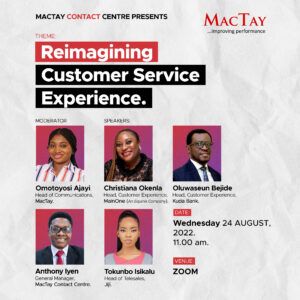
What Truly Makes for a Great Customer Service Experience?
Over the past decade, online marketing has become second nature to over two billion internet users. But have you ever thought about how these internet giants create the best customer experience? How do they make it so that we are pleasantly surprised every time we use their services or make a purchase?
When it comes to providing the best customer service, many companies are not far behind those of Google, Facebook or Amazon, who have undoubtedly mastered the art of “end-to-endless customer experience.”
However, most companies have yet to learn what it takes to create an excellent customer service experience that drives growth.
With that in mind, we will share six key components that can help you level up your customer experience game.
What Is Customer Experience (CX)?

Customer support team
Customer experience (CX) is the sum of everything your customers interact with and feel during their interaction with your company. It encompasses everything from the moment they first interact with you to the completion of the last transaction.
Customer experience is not just about how you communicate with your customers but also how they communicate with each other — via social media, email or text messages — and the broader environment that impacts their interactions with your brand.
Six Pillars of an Excellent Customer Service Experience
- Empathy
- A positive attitude
- Proactively problem-solve
- Consistency
- Personalised services
- Feedback implementation
#1. Empathy
Emotionally connected customers buy more products, patronise you often, and recommend you to their networks — Harvard Business Review, 2016.

Be empathetic
Attracting new customers is one thing; keeping them for the long term is another. But how do you foster a great relationship that keeps your customers glued to your brand? It all begins with empathy.
Empathy is the foundation of a great customer experience. It is the ability to understand and relate to your customers so that you can create products or services that solve their problems, meets their needs and are enjoyable for them.
Customers are more than just wallets ready to be emptied. They are people with feelings, desires, and goals. Creating an emotional connection with them will help unlock their hearts and wallets.
Empathy lets you connect with your customers, turn their pain points into profitable insights and build a long-lasting relationship.
#2. A positive attitude
“People will forget what you said. They will forget what you did. But they will never forget how you made them feel.” — Maya Angelou.
Imagine you are driving down a road, and your car breaks down. You need to find a mechanic, so you stop at the service station closest to your car. There you see mechanics working on cars, but you are unsure which one might be the best for your vehicle.
You decide to go for the one that seems to be the best offer due to its popularity. However, when you enter the garage, the employees do not seem to welcome or be interested in helping you.
Instead of being listened to and helped, you are greeted with a frown and an attitude that tells you they will not help you. What will probably be your experience in this scenario?
On the other hand, if your team is friendly and courteous, it sets the tone for positive customer interaction with your brand. Flavio Martins, VP of Operations and Customer Service at DigiCert, sums it up, “the right attitude turns negative customer experiences into positive customer experiences.”
Join the MacTay Contact Centre webinar: “Reimagining Customer Service Experience.”
#3. Proactively problem-solve
54% of consumers say they have higher expectations for customer service teams than they did one year ago.

Proactively problem-solve
All successful companies have one thing in common: they use innovative solutions to deliver their products or services faster. They know that in today’s instant gratification world, delays and long wait times can frustrate customers and ruin their experience.
Remember when you tried to reach your favourite brand’s customer service team? How did you feel when you heard the interactive voice response (IVR) or call progress tone? Frustrating, right? Especially when you have an urgent need.
That is why it is crucial to set up a system that allows you to handle customer requests promptly. This could include a help desk or customer service hotline that is open during regular business hours or a chatbot that can respond quickly to online inquiries.
73% of people believe valuing their time is the most significant thing in any online customer experience.
#4. Consistency
“Consistency sets expectations and creates predictability. And that leads to trust. When a brand earns a customer’s trust, the relationship is solid.” — Blake Morgan.
From the first interaction with your brand to the last, every customer should experience the same high quality of service. This means maintaining a consistent tone of voice, answering queries promptly, and delivering on your promises.
For example, when customers call your service support line, they should have a similar experience to chatting with you online. Or if they visit your company website, it should look and feel the same as the physical store.
This helps to create a sense of familiarity and trust, which is essential for building long-term customer relationships.
Recommended reading: How ready is your organisation for the future of work?
#5. Personalised services
80% of consumers are more likely to purchase from a brand that offers personalised experiences.
Nearly 90% of people say they prefer to talk to a real person when they have questions or problems. Why is this so important? Because talking to a live agent feels personal, and personalisation fosters long-term relationships, which is what you want in business.
In contrast, sales and marketing conversations often fail because they are one-sided. Customers are bombarded with messages not tailored to their needs — intrusive emails and salesy social media posts. Do you think your customers fancy this?
Personalisation is about making customers feel like they are the most important person in the world. It is about identifying your customers’ needs and doing everything you can to meet their expectations.
Provide value at scale but delight customers individually.
#6. Feedback implementation
“Your most unhappy customers are your greatest source of learning.” — Bill Gates.
Customer feedback reflects a customer’s experience with your company, whether it is their first or last interaction. It is a gift that keeps on giving because it allows you to measure consumer perceptions and helps you continuously improve the quality of your product or services.
However, you do not always have to wait for your customers to rate your service offering; you need to proactively solicit those reviews by establishing a feedback channel.
Finally, fix the problems customers complain about and reward the excellent feedback with positive changes that make your customers happier and improve their lives.
What’s next?
“Excellent customer service is the number one job in any company! It is the personality of the company and the reason customers come back. Without customers, there is no company” — Connie Edler.
You can excel in providing an excellent customer service experience if you:
- Prioritise human connections by incorporating a culture of empathy.
- Reduce customer churn by providing a fast response time to queries or complaints.
- Offer consistent and high-quality service across every customer touchpoint.
- Engage at scale, but delight individually by offering per-customer solutions.
- Implement a system to collate, analyse and act on customer feedback.
By making this a part of your company culture, you will create an ecosystem for customers to buy more, be more loyal and ultimately share their experiences with friends.











